Our Sun is classified as a yellow dwarf star, but it is considered average in size compared to other stars. So, what is the smallest known star in the Universe according to scientists? Let’s explore this question.
Although the Sun is classified as a dwarf star, it is not actually small. In fact, it is quite large compared to planets, with a diameter of 1.4 million kilometers. The Sun is also not a small star in general, as there are billions of stars like it in our galaxy alone. However, in a few billion years, the Sun will undergo changes and become a red giant, expanding to a diameter of 355 million kilometers and potentially engulfing the Earth. Therefore, if we are looking for the smallest star, we need to search elsewhere.
What do we mean by dwarf stars?
Dwarf stars come in various forms. For instance, there are yellow dwarf stars like our Sun which can have a mass ranging from 0.81 to 1.22 times that of the Sun. These stars emit light through a thermonuclear reaction that converts different types of hydrogen into helium, and their surface temperature can reach around 5-6 thousand degrees.
On the other hand, there are also extremely small stars with a mass less than 8% of the Sun’s mass. These objects could be considered more like planets, as they share more similarities with planets than with typical stars. They fall somewhere between being stars and giant planets. Due to their low mass, they lack the necessary conditions for a full-fledged thermonuclear reaction. Instead, the reaction in their core is sustained solely by the burning of heavy hydrogen, specifically deuterium and tritium. Consequently, their surface temperature often hovers around 1000 Kelvin.
The star planets in question bear a striking resemblance to giant planets, albeit with much higher temperatures. These celestial bodies are essentially balls of gas, similar to Jupiter, complete with cloud bands. However, the temperature below the surface is much hotter. Emitting a dim red-brown light, they act as nightlights, illuminating only their own clouds and satellites.
Red dwarfs can be thought of as a hybrid between these scorching hot planets and yellow dwarfs. They are significantly more massive than the former, yet smaller than the latter, and they possess a fully-fledged thermonuclear reaction within. However, this reaction is not overly active, resulting in a surface that is only “red” in terms of temperature. One example of this type is the smallest star in the Universe, known as OGLE-TR-122b.
Discovery of the tiniest star
Back in 1992, the OGLE project was initiated with the primary goal of investigating dark matter through microlensing. This technique involves the observation of light deflection in the vicinity of massive entities.
Throughout the course of this project, numerous exoplanets and brown dwarfs were stumbled upon. These objects emit such a minuscule amount of light that they remain undetectable through telescopes. However, due to their ability to deflect light, they were eventually discovered and certain characteristics were even determined.
During this very endeavor, the star OGLE-TR-122b was identified in 2005. This star holds the distinction of being the tiniest known star in the entire Universe according to scientific knowledge. Undoubtedly, the Universe is vast, containing an abundance of similar entities, but their detection even in close proximity is extremely challenging. As a result, this particular star stands as the sole representative of its kind that has been identified thus far.
What is the tiniest star in the Universe
Situated in the southern constellation of Kiel, this peculiar entity is not visible in the northern hemisphere. In reality, it is a binary system in which the primary component is designated OGLE-TR-122a and is a typical star resembling the Sun. Its mass and dimensions are nearly identical to those of the Sun, and it also belongs to the category of yellow dwarfs.
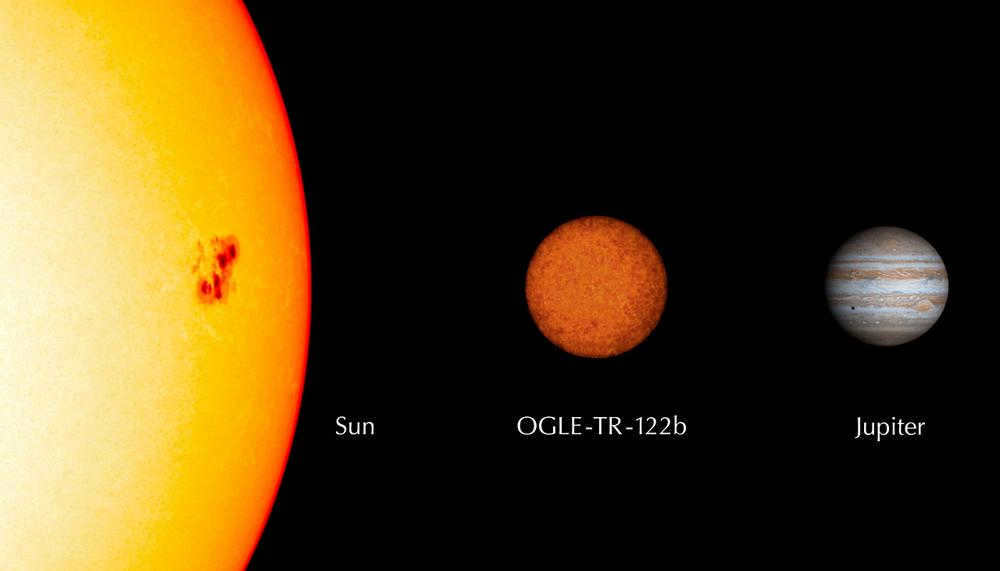
The sizes of OGLE-TR-122b, the smallest star, are compared to those of the Sun and Jupiter.
OGLE-TR-122b is the smallest star in this system. Its mass is merely 0.09 solar masses, which is close to the minimum required for star ignition. Theoretically, a thermonuclear reaction can be initiated with a mass of 0.07-0.08 times that of the Sun, and this star is approaching that threshold. If it were slightly lighter, it would be classified as a large planet. However, despite its low mass, it still weighs 100 times more than Jupiter, so it will not transform into a star.
In terms of size, the smallest star is only 16% larger than Jupiter and a mere 12% the size of the Sun.
The OGLE-TR-122 system has a remarkably short orbital period of just 7.3 days, indicating that the stars in this system are in close proximity to each other.
Confirmation of the existence of this star has provided evidence supporting theoretical calculations that suggest even the smallest stars can have sizes similar to those of giant planets.
Unfortunately, this intriguing system cannot be observed in the sky. Firstly, it is situated in the southern hemisphere, and secondly, its brightness is a mere 15.6m, requiring the use of a rather large telescope. Therefore, it is not possible to visually distinguish the smallest star, OGLE-TR-122b, from its regular-sized neighbor.
Actually, this question is not as straightforward as it appears. Determining the precise size of stars is incredibly challenging, as it is based on a multitude of indirect data since we cannot directly observe their disks. Direct observations of stellar disks have only been made for a few large and nearby supergiants, while there are millions of stars in the sky. Therefore, identifying the largest star in the Universe is not an easy task – we primarily have to rely on calculated data.
Furthermore, in certain stars, the boundary between the surface and the vast atmosphere is highly ambiguous, making it difficult to discern where one ends and the other begins. However, this discrepancy amounts to millions of kilometers, not just a few hundred.
Many stars lack a clearly defined size as they undergo pulsations, causing them to expand and contract, sometimes to a significant extent.
Furthermore, the field of science is constantly evolving, with increasingly precise measurements being made and distances and other parameters being clarified. As a result, some stars that once seemed unremarkable are now found to be much more intriguing. This is particularly true in terms of size.
Therefore, let’s examine a few potential contenders for the title of the largest stars in the Universe. It is noteworthy that all of these stars are relatively close in cosmic terms, and they also hold the distinction of being the largest stars in our own Galaxy.
VV Cepheus: The Enormous Hypergiant Star
Meet VV Cepheus, a captivating red hypergiant that proudly claims to hold the title of the largest star in the entire Universe. While it may not actually be the largest, it certainly comes incredibly close.
What makes VV Cepheus even more fascinating is that it belongs to a unique class of stars known as eclipsing variables. Specifically, it is a double star system where the giant star, referred to as component A, takes the spotlight. The second component, a rather unremarkable blue star, is eight times larger than our very own Sun. However, it is the red hypergiant that steals the show with its pulsating nature, boasting a period of 150 days. Throughout its pulsations, its size can range from a staggering 1,050 to 1,900 times the diameter of our Sun. At its peak, this massive star shines an astonishing 575,000 times brighter than our humble Sun!
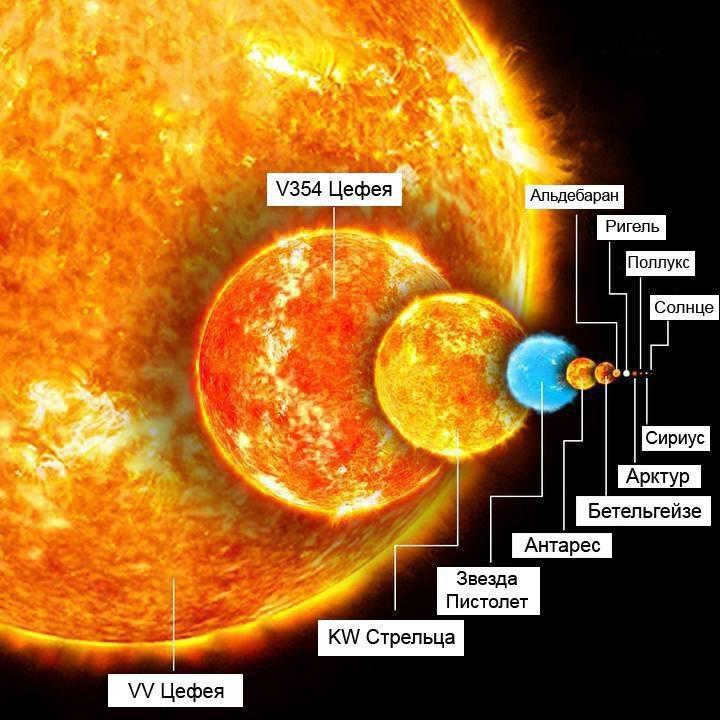
An examination of the dimensions of the Sun and various more substantial stars in comparison to VV Cepheus.
This particular star is situated 5,000 light years away from our location, and yet it possesses a luminosity of 5.18 m in the night sky. Consequently, with clear atmospheric conditions and keen eyesight, it can be readily observed. Additionally, even with the aid of binoculars, its visibility is easily discernible.
UY of Shields
This remarkable red hypergiant star is also noteworthy for its impressive magnitude. Several online sources have labeled it as the largest star in existence. Categorized as a semi-regular variable star, it pulsates and exhibits fluctuations in its diameter, which can range from 1708 to 1900 times the size of our Sun. Just envision a star nearly 1900 times more massive than our own Sun! If we were to position it at the center of our Solar System, all the planets, including Jupiter, would be contained within its colossal expanse.
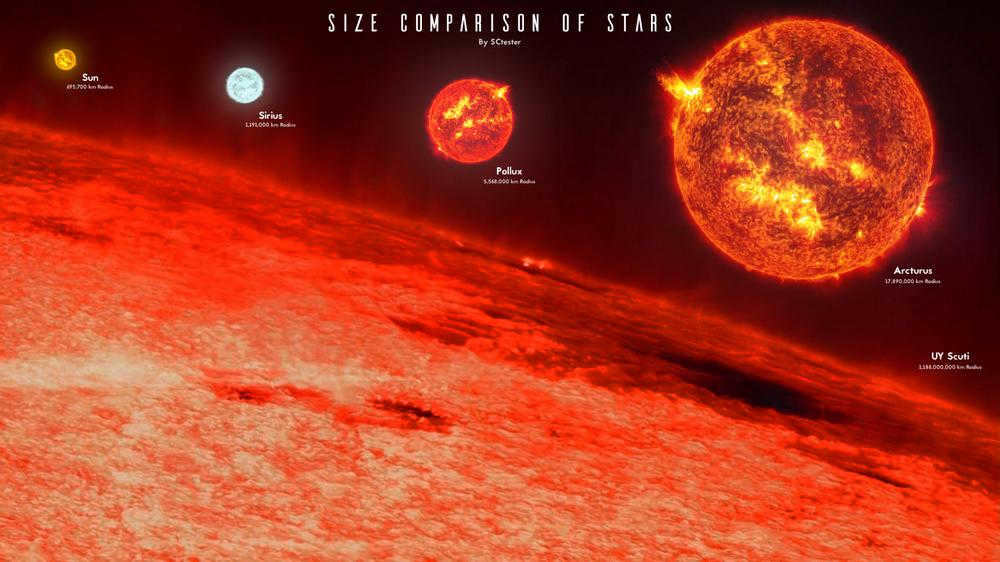

Among the countless stars in the Universe, there are a few that stand out for their immense size. The Sun, Sirius, Pollux, and Arcturus are well-known examples, but they pale in comparison to the UY Shield. This star is believed to be the largest in the entire Universe.
In terms of measurements, the diameter of the UY Shield is a staggering 2.4 billion kilometers, which is equivalent to 15.9 astronomical units. To put it into perspective, this colossal star could accommodate 5 billion suns within its vast expanse. Despite its tremendous size, the UY Shield emits 340,000 times more light than the Sun. Interestingly, its surface temperature is lower than that of the Sun, primarily due to its larger surface area.
When UY Shield reaches its peak brightness, it appears as a faint reddish star with a magnitude of 11.2. This means that it can be observed through a small telescope, but it is not visible to the naked eye. The reason for this is that UY Shield is located at a distance of 9500 light-years from Earth, making it impossible to see with the naked eye. Additionally, there are dust clouds between us and UY Shield, further obscuring its visibility. Without these dust clouds, UY Shield would be one of the brightest stars in our sky, despite its tremendous distance.
UY Shield is an enormous star, comparable in size to another candidate, VV Cepheus. These two stars are similar in maximum brightness, and it is difficult to determine which one is larger. However, there is certainly an even larger star out there!
Big Dog’s VY: A Giant Among Giants
Reports suggest that the diameter of VY Big Dog, a red hypergiant star, is estimated to be between 1800 and 2100 times the size of our Sun. This makes it one of the largest known stars in the universe. In fact, if VY Big Dog were at the center of our solar system, it would be large enough to engulf all the planets, including Saturn. Even the previous contenders for the title of biggest star could fit comfortably inside this colossal star.
It takes a mere 14.5 seconds for light to complete a full orbit around our Sun. However, if we were to measure the time it would take for light to travel around VY Big Dog, it would be a staggering 8.5 hours! To put this distance into perspective, imagine flying around the surface of VY Big Dog in a fighter jet at a speed of 4500 km/h. Even with no breaks, it would take a jaw-dropping 220 years to complete the journey.
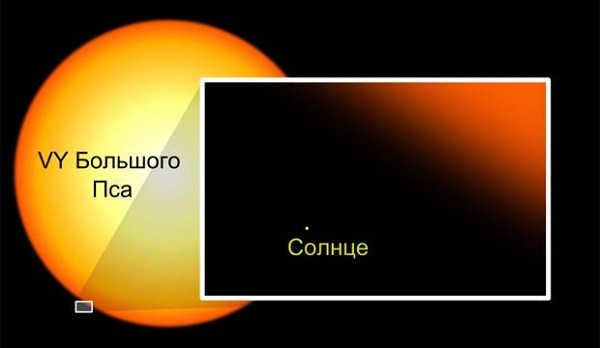
A comparison between the Sun and VY of the Big Dog reveals interesting findings.
This particular star continues to puzzle scientists due to its elusive size. Determining its exact dimensions is challenging due to the hazy corona, which possesses a significantly lower density compared to that of the Sun. Furthermore, VY of the Big Dog is thousands of times less dense than the air we breathe.
In addition, VY Big Dog is experiencing matter loss and has given rise to a distinct nebula surrounding it. This nebula may potentially contain more matter than the star itself. Moreover, it is highly unstable and is expected to undergo a hypernova explosion within the next 100,000 years. Fortunately, being situated 3900 light years away, Earth is not at risk of this catastrophic event.
This star can be observed in the night sky using binoculars or a small telescope, with its brightness ranging from 6.5 to 9.6 magnitudes.
This is the most massive star known at present. It is also identified as RSGC-18. Positioned in the Shield constellation within the Stevenson cluster, it derives its name from the cluster. The discovery of this cluster took place in 1990, and it happens to encompass a significant number of red hypergiants, with Stevenson 2-18 being one of them. What type of star is this?
Being a red hypergiant, this celestial body is situated at a tremendous distance – approximately 18,900 light years away. Its radius is calculated to be 2150 times that of the Sun, surpassing all other contenders, or 10.04 astronomical units. If this star were to replace the Sun, all planets, including Saturn, would fit inside it. Moreover, it could accommodate 10 billion stars like our Sun.
Stevenson 2-18 possesses a surface temperature of 3200 K, but due to its vast surface area, it emits 440,000 times more radiation than the Sun.
What is the biggest star in the Universe?
We have examined several of the largest stars in the Universe that scientists currently know about. Their size is absolutely mind-boggling. All of these stars could potentially hold the title of the largest, but the information is constantly changing – science is always evolving. According to certain data, the UY of the Shield could even “inflate” to 2200 times the size of our Sun, surpassing the VY of the Big Dog. However, there is still much debate about the size of the VY Big Dog.
Until recently, the UY Shields was considered the largest star in the Universe, but now that title belongs to the hypergiant Stevenson 2-18. Nevertheless, there are numerous other similar clusters in the Shield constellation, each containing its own red hypergiants. These stars are still not fully understood, so it is very possible that a new champion will be discovered among them.
Undoubtedly, discussing the entirety of the Universe may not be entirely precise. Presently, Stevenson 2-18 is recognized as the most massive star within our Milky Way galaxy, as no larger stars have been identified thus far. Hence, Stevenson 2-18 retains its status as the largest star in the Universe.

The distance between us and all the stars is so vast that, with only a few exceptions, they appear as mere points even when observed through the most advanced telescopes. It is only in recent times that we have been able to capture images of the discs surrounding certain massive stars. In this tutorial, we will acquire the knowledge of how to calculate the dimensions of stars and determine the density of their matter. Additionally, we will explore various models that depict the internal structure of stars belonging to different classifications.
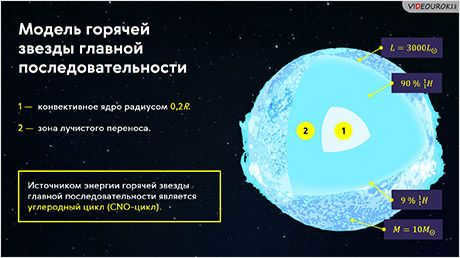
Currently, it is not possible to view or distribute the instructional video with students
In order to watch this and other video lessons included in the package, you must add it to your personal account.
Unlock amazing possibilities


Lesson plan for Dimensions and Patterns of Stars
By discovering physical double stars, which are systems of closely spaced stars bound by gravitational forces and orbiting near a common center of mass, we have been able to estimate their masses using Kepler’s third generalized law.
Despite this progress, determining the sizes of stars has remained a challenge. The vast distances between stars, with few exceptions, make them appear as mere dots even with the most powerful telescopes. Only recently have we been able to capture images of the disks of some very large stars. Occasionally, these images also reveal spots on the stars.
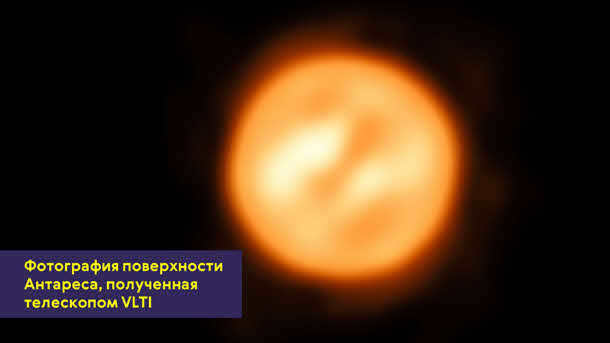
When it comes to nearby stars, their actual size can be calculated by using their known angular size and distance (or annual parallax):
However, most often, the size of stars is expressed in terms of solar radii. If we consider that 1 astronomical unit (AU) is equal to 149.6 million kilometers divided by 0.696 million kilometers (the radius of the Sun), which is approximately 215, we can use the following formula to determine the size of stars in solar radii:
As an example, let’s calculate the size of Orion’s ε star if its angular diameter is 0.00072 arcseconds and its annual parallax is -0.0024 arcseconds.
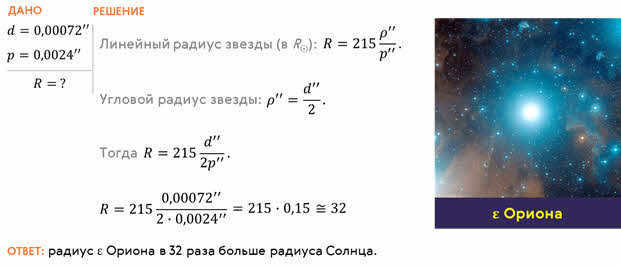
We have examined the most straightforward method for determining the size of stars. However, in the majority of instances, the radii of remote stars must be computed using information on their luminosity and temperature. The luminosity of a star is determined using the identical formula employed to ascertain the luminosity of our Sun:

Why don’t we start by dividing the initial equation with the second one:

Assuming that the radius of the Sun and its luminosity are both equal to one, let’s rephrase the previous equation while considering these conditions:
By utilizing the resulting equation, it becomes straightforward to express the linear radius of the star in terms of the linear radius of the Sun:
For instance, let’s calculate the radius of one of the largest known stars, given that the temperature of its photosphere is approximately 3500 K and its luminosity is 270,000 times that of the Sun. To simplify the calculations, we’ll assume that the temperature of the Sun’s photosphere is 6000 K.
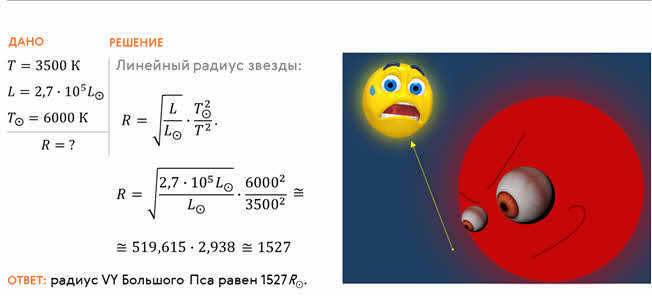
To grasp the immensity of it, just imagine that if it were positioned at the core of our solar system, its expanse would encompass the entire orbit of Saturn. The time it would take for light to complete one revolution around this colossal star is roughly 8 hours. For a supersonic aircraft traveling at a speed of 4,500 km/h, it would require a staggering 220 years to circumnavigate.
However, not all stars in the cosmos are of such grand proportions. In fact, there are diminutive stars comparable in size to our own planet, known as white dwarfs. On the other end of the spectrum, there are neutron stars with radii measuring just a few tens of kilometers. An example of this is the neutron star PSR J1614-2230, which was discovered in 2006 and has a minuscule radius of only 13 kilometers.
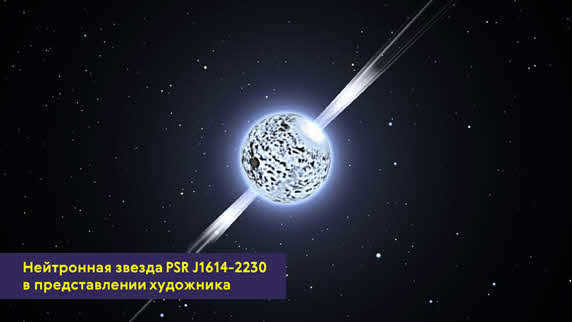
However, the star in question has a mass that is 1.97 times greater than that of the Sun. We can now proceed to calculate the density of this star’s matter. To simplify our calculations, we will assume that the mass of the Sun is equivalent to 2 ∙ 10 30 kilograms.
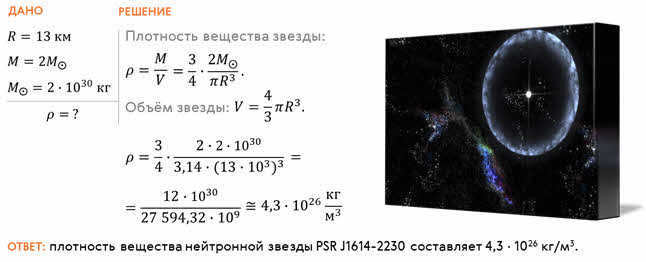
When comparing, the average density of matter in heavy atomic nuclei is approximately 2.8 ∙ 10 17 kg/m 3 .
By analyzing the available data on the masses and sizes of different types of stars, calculations reveal that their average density can vary significantly. For instance, our hypergiant from the previous problem has an average density of only about 10 -5 kg/m 3 , which is approximately 100,000 times lower than the density of air under normal conditions.
Stars exhibit variations in their internal structure, depending on their mass and size, although they generally share the same chemical composition.
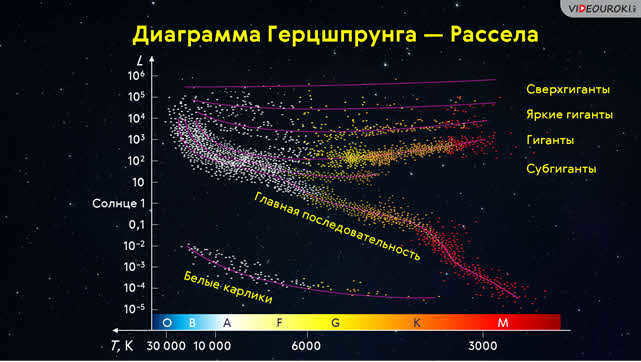
Now, let us examine the diagram depicting the relationship between the spectrum and luminosity of stars. As we recall, positioned at the pinnacle of the primary sequence are the scorching, colossal stars. Consider, for instance, a star boasting a mass approximately ten times that of our Sun and a luminosity three thousand times greater than that of our Sun.

Calculations indicate that at the heart of such a celestial body, there exists a convective nucleus that is approximately 0.2 times the size of the star’s radius. The remaining portion of the star is occupied by a luminous shell, wherein energy transfer occurs through radiation. This particular star consists of approximately 90% hydrogen and 9% helium. It is evident that this star is relatively uncomplicated. Additionally, the primary source of energy for this star is the carbon cycle, wherein hydrogen is converted into helium through the influence of three catalysts: carbon, nitrogen, and oxygen.
Now, let us examine the stars situated at the lower end of the primary sequence.
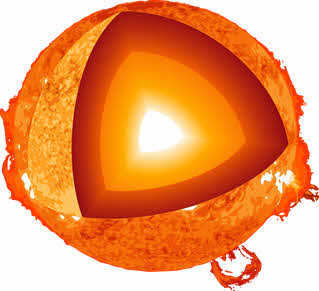
First and foremost, these stars lack a convective core, but they possess an outer convective zone. This zone commences at a distance of around 0.65 times the total radius of the star and stretches close to its surface. The energy source for such stars is the well-known proton-proton cycle.
Now, let’s shift our attention to the top-right corner of the diagram. As we recall, this is where highly massive stars are situated. Consider a giant star with a radius approximately 20 times that of the Sun. Suppose the mass of the giant is only slightly greater than the mass of the Sun (1.3M⨀), and its luminosity will be 230 times that of the Sun.
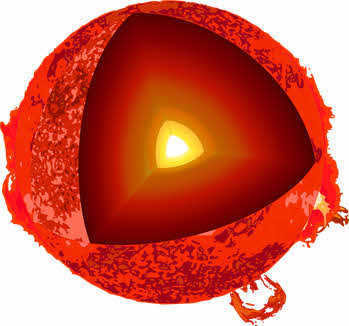
There is a valid inquiry: is it truly accurate to classify the contents of the red giant’s core as a gas?
The response is resoundingly affirmative. However, this gas possesses unique characteristics, and to fully elucidate its properties, we must examine the composition of white dwarfs. These celestial bodies emit a minuscule amount of light (occasionally a thousand times less than the luminosity of the Sun). Simultaneously, they possess a mass similar to that of the Sun and a size akin to that of planets.
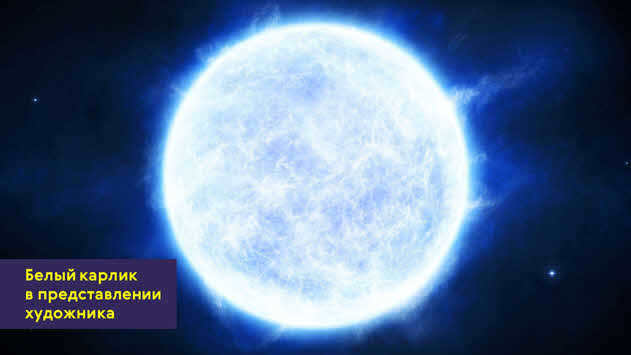
This results in the average density of white dwarf substance (10^5 – 10^9 g/cm^3), which is almost a million times higher than the density of main sequence stars. However, what does this mean? Could the matter inside white dwarfs be in a liquid or solid state?
No, it cannot. The density of a liquid or solid cannot exceed 20 g/cm^3. At this density, the atoms are already extremely close to each other. Therefore, white dwarfs do not contain atoms. Instead, they consist of a very dense ionized gas composed of atomic nuclei and individual electrons. This type of gas is known as a degenerate electron gas. Its pressure is solely determined by density and is independent of temperature. On the outer layer, the white dwarf is surrounded by a thin shell of ideal gas.
Studying the vast stellar systems that form galaxies has allowed us to understand the relationships, origins, and evolution of different types of stars. We will discuss galaxies in detail in a future lesson.
The categorization of stars by color is based on their spectral characteristics rather than their visible brightness. The chemical composition of a star determines its emission spectrum, which in turn affects its temperature.
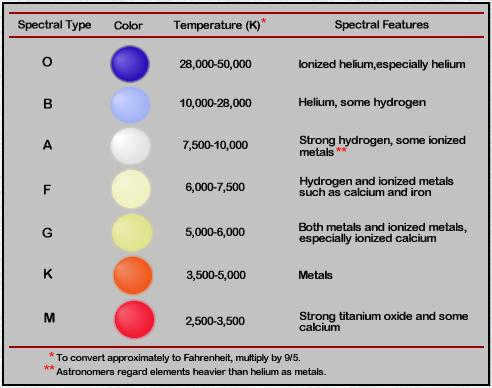
The Harvard systematization, which was developed in the early 20th century, is the most widely used method for categorizing stars. According to this system, stars are classified into 7 types based on their color.
For instance, stars with the highest temperature, ranging from 30,000 to 60,000 K, belong to the O class. These stars appear blue in color and can have a mass of up to 60 solar masses and a radius of 15 solar radii. The hydrogen and helium lines in their spectrum are relatively weak. The luminosity of these celestial bodies can reach up to 1,400,000 solar luminosities.
Class B stars are characterized by temperatures ranging from 10 to 30 thousand K. These celestial bodies have a blue-white color, with a minimum mass of 18 solar masses and a radius starting at 7 solar radii. The lowest luminosity for stars in this class is 20 thousand solar luminosities, and the hydrogen lines in their spectrum become more intense, reaching average values.
On the other hand, Class A stars have temperatures ranging from 7.5 to 10 thousand K and have a snow-white color. The minimum mass for these celestial bodies starts at 3.1 solar masses, while the radius starts at 2.1 solar radii. The luminosity of Class A stars ranges from 80 to 20 thousand solar luminosities. In the spectrum of these stars, the hydrogen lines are strong, and metal lines also appear.
Class F objects have a yellow-white color, but they appear as snow-white. They have a temperature ranging from 6 to 7.5 thousand K, a mass ranging from 1.7 to 3.1 solar masses, and a radius ranging from 1.3 to 2.1 solar radii. The luminosity of these stars varies from 6 to 80 solar luminosities. The hydrogen lines in their spectrum are weakened, while the lines of metals are strengthened.
Therefore, all types of snow-white stars fall within the A to F classes. Following the classification, yellowish and orange stars come next.
Stars are characterized by various parameters including their mass, size, and luminosity. The color of stars can range from red to blue, with the temperature of the star increasing as it gets closer to the blue end of the spectrum.
Red: Stars in this category have temperatures ranging from 2000 to 3500 degrees.
Orange: Stars in this category have temperatures ranging from 3500 to 5000 degrees.
Yellow: Stars in this category have temperatures ranging from 5000 to 6000 degrees. Our Sun belongs to this category.
Yellow-white: Stars in this category have temperatures ranging from 6000 K to 7500 K.
White (class A): Stars in this category have temperatures ranging from 7500 K to 10000 K.
Blue-white (class B): Stars in this category have temperatures ranging from 10000 to 30000 degrees.
Blue (Class O): Stars in this category have temperatures ranging from 30000 to 60000 K.
Brown dwarf: This is a type of star that emits more energy than it receives from nuclear reactions. Brown dwarfs have temperatures around 300-500 degrees.
White dwarf. The majority of stars reach the end of their life cycle by transforming into white dwarfs. As they near the end, they undergo a process of contraction, reducing their size to hundreds of times smaller than their original size. During this process, they become a million times denser than water. However, they gradually lose their energy sources and cool down. Our Sun is destined to undergo this fate, although it is currently classified as a yellow dwarf.
Red giant. Red giants are a type of star that possesses a relatively low temperature (ranging from 3-5 thousand degrees Celsius) but emits a tremendous amount of brightness.
Wolf-Rayet type. Wolf-Rayet stars belong to a classification of stars that exhibit extremely high temperature and luminosity.
Supernovae. These celestial objects are stars that undergo a explosive process to complete their life cycle. If the spectrum of the explosion contains hydrogen lines, it is classified as a Type 2 Supernova. If hydrogen lines are absent, it is categorized as a Type 1 Supernova.
New. These are less intense Supernovae – not as luminous, and don’t emit as much energy.
Hypernovae. These are extremely massive Supernovae. In other words, Hypernovae are very large and massive stars (over 100 solar masses) that end their life with an explosion.
Bright Blue Variables (BGVs). These are extremely bright giant stars that also pulsate. Their brightness can be, for example, a million times greater than the sun’s.
This is believed to be due to the fact that stars of this type release excess energy – hence the intense brightness.
Ultra-bright X-ray sources. This is a type of star that emits very strong radiation, but only in the X-ray range.
Neutron stars. Neutron stars are a particular kind of star that undergoes core compression until nearly all of its particles are transformed into neutrons. These stars have a mass that is one and a half to three times greater than the Sun, yet they have a diameter of only about 10 kilometers, making them incredibly dense.
Displacement in space
Vega exhibits a redshift of approximately 13.9 kilometers per second with a margin of error of 0.9 units. As a result of its independent movement, this celestial body is gradually shifting in relation to objects in the remote reaches of space. By measuring Vega’s position, scientists were able to determine its proper motion, which amounts to 202.03 milliseconds per year. The overall proper motion of Vega is calculated to be 327.78 units per year.
Sporty Suits + Heeled Shoes: A Unique Combination
This fusion of sporty suits and heeled shoes is truly a work of art! It’s fascinating how women dare to experiment and express themselves by pairing lacquered stiletto heels with a cozy knitted tracksuit and a casual hood. To complete the look, they add vibrant makeup and eye-catching jewelry – a true display of beauty! However, it seems that some women may take the trend of mixing styles a bit too literally or envision themselves as the queens of hip-hop in a stage persona. Unfortunately, many of these attempts end up looking vulgar and provocative, especially when compared to the outfits worn by celebrities during their performances. Successfully blending opposing styles requires years of practice and learning, far beyond what can be achieved through advertising posters and cheap mass-market clothing.

Variations in the Color of Stars
The color palette of stars is incredibly diverse, offering a stunning array of hues. For instance, one constellation has earned the moniker “The Jewel Box” due to its vibrant blue and sapphire stars, which surround a brilliant orange star at its center. In comparison, our own Sun possesses a soft yellow hue.
The primary factor influencing a star’s color is the temperature of its surface. This can be easily explained by considering the nature of light, which is composed of waves. The wavelength of a wave, representing the distance between its peaks, is extremely small. To put it into perspective, imagine dividing a centimeter into 100,000 identical segments. A handful of these segments would constitute the wavelength of light.
Considering that this value is sufficiently small, every single alteration, no matter how insignificant, will result in a modification of the image we perceive. This is because our eyes interpret different wavelengths of light as distinct colors. For instance, blue light possesses wavelengths that are 1.5 times shorter than those of red light.
Furthermore, it is common knowledge that temperature can directly influence the color of objects. To illustrate, you can take any metallic item and expose it to fire. As it heats up, it will turn red. If the temperature of the flame were to rise significantly, the color of the object would also change – transitioning from red to orange, then from orange to yellow, and from yellow to white, ultimately culminating in a blue-white hue.
Scientists have established a connection between color and temperature based on physical laws. The temperature of an object is directly related to its radiation and inversely related to its wavelength. In comparison, blue waves have shorter wavelengths than red waves. When gases emit photons, the energy of those photons is directly related to the temperature and inversely related to the wavelength. As a result, the hottest stars exhibit a blue emission range.
As the nuclear fuel in stars is not infinite, it eventually depletes, causing stars to cool down. This is why stars of middle age appear yellow, while older stars appear red.
Furthermore, by analyzing the color of a star, it is possible to ascertain its age as mathematical equations enable the calculation of a star’s temperature through spectral analysis, which in turn facilitates the determination of its age.
Dreamcatcher – Star, planet
This is an individual of noble birth (aristocracy). And if anyone sees it in their residence, and it is not gleaming, then misfortune will befall noble and honorable individuals collectively. And if a person dreams of consuming the stars, they will partake in the wealth of the aristocracy. If they witness the stars gathering together, they will engage in dealings with people of high social standing. If they observe the stars falling to the ground, punishment and misfortune will befall the region. The individual who sees themselves holding a star in their hands will be blessed with a cherished and beautiful child. If a wealthy individual dreams of a sky devoid of stars, they will experience a decline in their fortune, and if a poor individual sees it, they will be honored with the death of a shahid (a martyr for their faith). If they witness the sky circling above them, they will embark on a journey. Stars also symbolize Alims, for when the mother of Imam Shafi’i carried him in her womb and had a dream of the planet Jupiter emerging from her and flying away, eventually dividing into smaller stars that dispersed in different directions, it was interpreted as a sign that her child’s knowledge would spread worldwide. To see stars in a dream during the daytime signifies encountering significant troubles. Whoever sees a star descending from the sky can either depart from this life or acquire a substantial amount of money. Stars of equal brightness indicate receiving joyful news. Stars of varying brightness represent a quarrel between close relatives.
How do scientists learn about these celestial objects?
By observing them, astronomers initially determine their mass, radius, and surface temperature. While we cannot directly see the inner workings of stars, we understand that they consist of plasma.
Temperature is measured by analyzing the radiation emitted from the surface of these heavenly bodies. No photons can escape from the depths of stars, so we never directly observe their internal structure.
Nevertheless, humans are able to accurately calculate the temperature at any point within these cosmic bodies. For instance, the temperature reaches thirteen million degrees at the center of the Sun. The temperature in the depths of the most massive stars can exceed three billion degrees.
Drawbacks of the system
The elliptical transmission system does not have any apparent disadvantages. However, there are a few challenges that riders may face. For bikes with a fixed torque ratio, additional fixation of the chain tensioner is required. Similarly, adjusting the shifter torque on a multispeed transmission can be difficult. Additionally, the chain section and gears of the elliptical transmission may wear out more quickly due to the round shape of the identical alloy.
The oval-shaped star places higher demands on the drive derailleur’s setup.
When riding at high cadences, shifting gears can sometimes cause the chain to get stuck between the frame and the large pinion, leading to deformation.
To prevent deformation, it is recommended to reduce the difference in the number of teeth between the large and small gears compared to a round star drivetrain.
- It is necessary to increase the frequency of pedaling at low speeds.
Main sequence as a stage of development
An approximate correlation between the duration of a star’s stay on the main sequence and its mass.
Regions of star formation with a significant number of O-class main sequence stars.
Hertzsprung-Russell diagram illustrating two dispersed star clusters, M 67 and NGC 188, which allow for the determination of their ages.
The evolutionary path after the main sequence for a star with a mass and metallicity similar to that of the sun in the Hertzsprung-Russell diagram.
Main article: Stellar evolution
Stars transition to the main sequence once they have completed the protostar phase. The point at which the star’s radiative power matches the power generated by its thermonuclear reactions (meaning no more energy is produced through compression) is known as the moment of entry into the main sequence. At this stage, the star is considered to have a zero age, and the area where these stars are found is known as the initial main sequence or zero-age main sequence. This segment is situated at the lower end of the main sequence.
The primary limiting factor for the total energy production in the process of helium fusion from hydrogen within a star is the quantity of hydrogen present. In the event that a star is in a state of equilibrium, it will emit an equal amount of energy as it generates. As a result, we can approximate the duration of a star’s main sequence by dividing the total energy that would be released if all hydrogen underwent thermonuclear reactions and transformed into helium by its luminosity. For instance, in the case of the Sun, this timeframe would be approximately 1010 years.
For stars in the range of 2 M⊙ < M < 20 M⊙, the relationship between mass and luminosity follows a power law, with luminosity proportional to mass raised to the power of 3.5. This relationship holds true for stars with smaller masses as well. As a result, the time a star spends on the main sequence is inversely related to its mass, with time proportional to mass raised to the power of -2.5. Therefore, heavier stars have shorter lifetimes and leave the main sequence earlier. However, for the heaviest stars, the relationship between luminosity and mass becomes linear, and their lifetimes do not decrease with increasing mass. Instead, these stars have lifetimes ranging from one to several million years, which is relatively short in astronomical terms. In contrast, the lowest-mass red dwarfs can live for approximately 10 trillion years.
Throughout the lifespan of a star, the core gradually accumulates helium, leading to a decrease in reaction rates and a shift in the star’s characteristics to maintain equilibrium. As a result, the star moves away from its original position on the main sequence and progresses towards higher luminosities and lower temperatures. For stars of intermediate mass, the main-sequence phase concludes when the interior temperature reaches a point where hydrogen starts burning outside of the core. At this stage, the star transitions to the subgiant branch and eventually evolves into a red giant. Subsequently, a helium flash occurs, igniting the burning of helium. Stars with greater masses also undergo helium burning, albeit with some variations in the process.
Since the potential lifespan of the lowest mass stars exceeds the age of the universe, there is currently only theoretical knowledge about their future evolution. Stars with a mass less than 0.5 M⊙ are unable to undergo the process of becoming giants. Instead, as helium accumulates in their core, these stars contract and increase in temperature, ultimately transforming into what is known as a blue dwarf.
In any case, subsequent phases in the development of a star correspond to a greater luminosity compared to the main-sequence phase. Conversely, any additional thermonuclear reactions, if they occur, result in a significantly lower specific energy release: for helium combustion, it is roughly 10 times lower than for helium fusion from hydrogen, and for subsequent reactions, it is even lower. Consequently, subsequent stages of stellar evolution occur much more quickly than the main sequence stage. For instance, for the Sun, the red giant phase will last approximately 130 million years – about two orders of magnitude shorter than the main sequence phase. The majority of stars experience a similar scenario, with up to 90% of them being on the main sequence.
What constitutes a star?
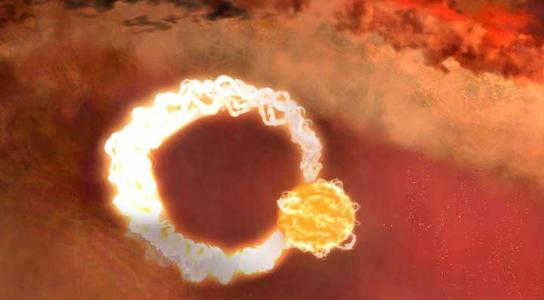
It took many centuries for humans to understand the true nature of stars. The study of different types of stars, their unique characteristics, and the chemical and physical processes that take place within them is a relatively new field of knowledge. Ancient astrologers could not have possibly fathomed that stars are not just tiny lights in the sky, but rather massive balls of intensely hot gas where thermonuclear fusion reactions occur. It is a peculiar paradox that the faint light emitted by stars is actually the result of dazzling nuclear reactions, while the comforting warmth of the sun is derived from temperatures reaching millions of kelvins.
All the stars visible to the naked eye can be found within the vast expanse of the Milky Way galaxy. The Sun, our own star, is situated on the outskirts of this stellar system. It’s truly mind-boggling to contemplate what the night sky would appear like if the Sun occupied the central position within the Milky Way. This galaxy is home to an astonishing number of stars, totaling over 200 billion.
Red Stars
Red dwarfs, such as low-temperature stars, have a dark reddish appearance, and they account for less than 7.5% of the Sun’s mass. Their temperature falls below 3500 Kelvin, and although they emit a diverse range of colors and shades, we perceive their glow as red.
Aging and cooling stars, whose hydrogen fuel has depleted, also exhibit a red or even brownish hue. Generally, the radiation emitted by these stars falls within this portion of the electromagnetic spectrum.
The second prominent star in the Orion constellation, Betelgeuse, is characterized by a distinctive red color. It is situated slightly above and to the right of another star on the celestial map, Aldebaran, which has an orange tint.
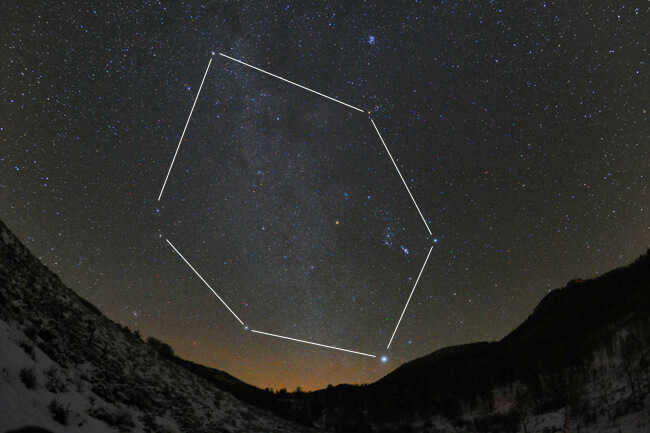
It never occurs to us that there might be existence beyond our planet, beyond our solar system. Maybe there is life on a celestial body revolving around a blue, white, red, or even yellow star. Conceivably, there exists another planet similar to Earth, with inhabitants of the same nature, yet we remain in the dark about its existence. Our satellites and telescopes have identified numerous planets that could potentially support life, but these planets are located thousands and even millions of light years away.
Purple celestial bodies
The color purple in stars is similar to the color green, as it can be attributed to either a gas envelope surrounding the star or an optical effect in a binary star system. However, while we know about a dozen green stars, there are only two known violet stars. One of these stars is named Pleione and is located in the Pleiades star cluster. The violet color of Pleione was first observed by Russian-American astronomer Otto Ludwigovich Struve in the mid-20th century using a large telescope with a two-meter mirror. This telescope, now known as the Otto Struve Telescope, is located at the McDonald Observatory in Texas, USA. Struve also gave Pleione the nickname “Purple Star”. Pleione is a blue-white giant star with a rapid rotation period of 11.8 hours and emits purple-colored gas clouds.
The second violet star is named the Heart of Charles II and is located in the constellation Canes Venatici, also known as the Hound Dogs. In ancient times, the Greeks referred to this constellation as Hara, while the Romans called it Asterion. Johann Bayer, a German astronomer, marked the star as the brightest in the constellation with the Greek letter alpha. However, English scientist Charles Scarborough depicted the executed King Charles I on star maps of the constellation in the late 17th century, renaming it in honor of his son, Charles II. Despite the abolition of the constellation in 1922, the star retained the name Heart of Charles II in popular science literature and among amateur astronomers. This star is a double star system, with the brighter component appearing yellow and the fainter component appearing violet when observed through a telescope due to visual perception in comparison to the brighter component.

Here you will discover numerous captivating and exhilarating narratives, a plethora of facts and elucidations from around the globe. On our website, you will uncover a wealth of valuable and intriguing information spanning various domains such as science, sports, nature, animals, and much more.
Engage in reading and sharing with your acquaintances!
Within this piece, we shall delve into – The gargantuan celestial bodies of the universe.
Stars are colossal spheres of searing plasma. Nonetheless, aside from the Sun, they appear as minuscule specks of illumination in the nocturnal firmament. It is worth noting that our Sun is neither the tiniest nor the largest star.
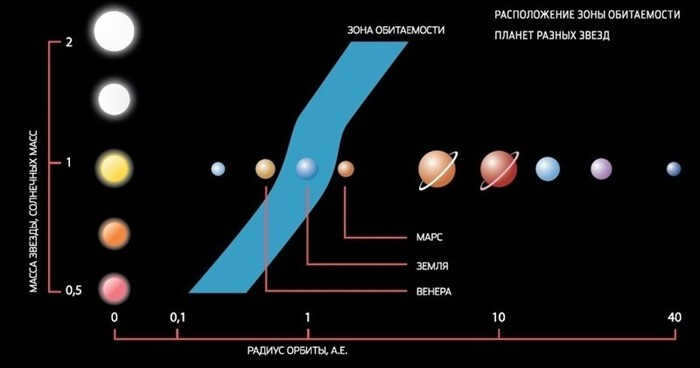
There exist numerous stars in the universe that are more massive and bigger than the Sun. Some of them have undergone evolutionary changes since their formation, while others continue to grow as they progress through their lifespan.
In order to determine the largest star in the universe, we compared the sizes of different stars. We used the equatorial radius of the Sun, which measures 696,392 kilometers, as the standard unit of measurement for stellar radius.
Comparison of star sizes
Astronomers use a scale to estimate the sizes of stars, where the smaller the number, the brighter the star. Each subsequent number represents a star that is ten times less bright than the previous one. The brightest star in the night sky is Sirius, which has an apparent stellar magnitude of -1.46, making it 15 times brighter than a zero magnitude star.
Stars with a magnitude of 8 or higher cannot be seen with the naked eye. Stars are also classified by color into spectral classes, which indicate their temperature. The universe has the following classes of stars: O, B, A, F, G, K, and M.
The O class consists of the hottest stars in the universe, which have a blue color. The coolest stars belong to the M class and have a red color.
| blue | blue | Faint lines of neutral hydrogen, helium, ionized helium, multiply ionized silicon, carbon, nitrogen. |
| blue-white | blue-white and white | Helium and hydrogen absorption lines. Weak lines of H and K calcium II. |
| white | white | Strong Balmer series, strengthening of H and K calcium II lines towards class F. Metal lines begin to appear closer to class F. |
| yellow-white | white | H and K calcium II lines, strong metal lines. Hydrogen lines begin to weaken. Appearance of Ca I line. Strengthening of G band formed by Fe, Ca, and Ti lines. |
| yellow | yellow | Intense H and K lines of calcium II. Ca I line and numerous metal lines. Weakening of hydrogen lines. Appearance of CH and CN molecule bands. |
| orange | yellowish-orange. | Intense metal lines and G band. Almost invisible hydrogen line. Appearance of TiO absorption band. |
| red | orange-red | Intense bands of TiO and other molecules. Weakening of G band. Visibility of metal lines. |
Contrary to popular belief, it should be acknowledged that the stars in the Universe do not actually twinkle. It is merely an optical illusion caused by atmospheric interference. A similar phenomenon can be observed on a scorching summer day, when looking at a heated asphalt or concrete surface.
The heat causes the air to rise, creating the appearance of looking through rippling glass. This same process is responsible for the perception of twinkling stars. Stars that are closer to Earth will exhibit more noticeable twinkling, as their light passes through denser layers of the atmosphere.
Various Kinds of Stars in the Universe
The main sequence represents the stage of a star’s life when a nuclear reaction occurs within it, marking the longest phase of its existence. Our Sun is presently in this stage. Throughout this period, the star experiences minor variations in both luminosity and temperature.
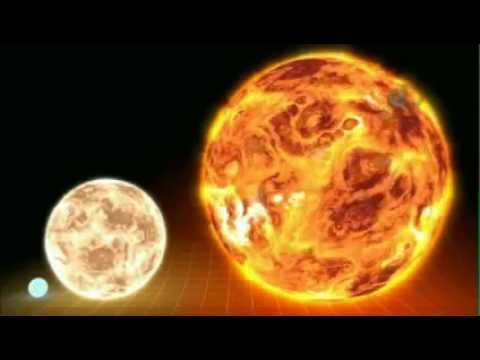
The duration of this period varies depending on the mass of the star. For large massive stars, the period is shorter, while for small stars, it is longer. Very large stars have enough internal fuel to sustain them for a few hundred thousand years, whereas small stars like the Sun can shine for billions of years.
A red giant is a type of star that is characterized by its reddish or orange color.
Red giants represent the later stages of a star’s life cycle, when its hydrogen reserves are running low and helium begins to undergo fusion into other elements. The increasing internal temperature of the star’s core leads to its collapse.
As the outer surface of the star expands and cools, it causes the star to appear red. Red giants are significantly larger than ordinary stars, measuring about a hundred times their size.
Red supergiants are the largest among the giants. An excellent illustration of a red supergiant is Betelgeuse, a star located in the constellation Orion.
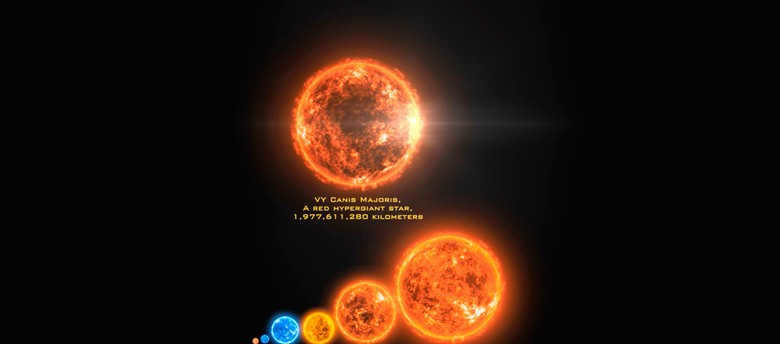
A white dwarf is the remnant of a normal star once it has completed the red giant phase. After exhausting its fuel, the star can expel some of its matter into space, forming a planetary nebula. What remains is a lifeless core.
No nuclear reactions can occur within it. It emits light with its residual energy, but eventually, this energy runs out and the core cools down, transforming into a black dwarf. White dwarfs have a very high density.
They are not larger than Earth but have a mass comparable to that of the Sun. These stars are incredibly hot, with temperatures reaching 100,000 degrees or more.
A brown dwarf is alternatively referred to as a sub-star.
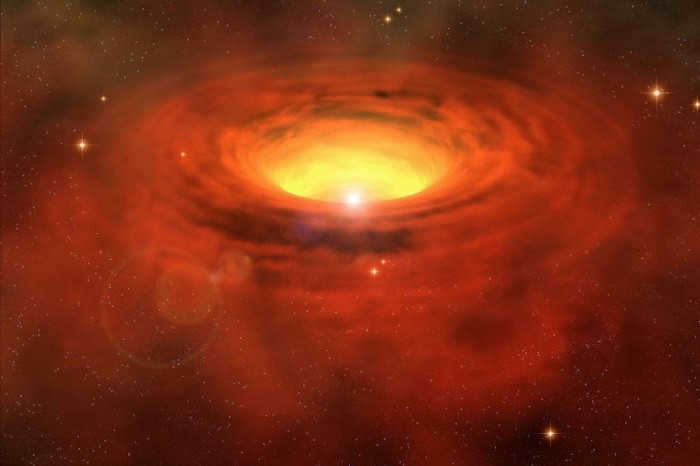
Remaining is a brown dwarf. It is a massive gas sphere, too large to be classified as a planet but too small to be considered a star. It is smaller than the Sun but several times bigger than Jupiter.
Brown dwarfs do not emit any light or heat. They simply exist as dark blobs of matter in the vast expanse of the universe.
A Cepheid is a type of variable star that exhibits varying levels of luminosity over a pulsation cycle that can range from a few seconds to several years, depending on the specific type of variable star.
Cepheids typically experience changes in luminosity at the beginning and end of their lifespan. These changes can be attributed to internal processes within the star or external factors, such as the gravitational influence of a nearby star in a binary system, also known as a double system.
There are numerous stellar systems in the Universe that consist of multiple stars. Binary stars, for example, are a type of system where two stars are gravitationally bound to each other. These stars revolve around a common center of mass in closed orbits.
About half of the stars in our galaxy have been observed to exist in pairs. When observed visually, these paired stars appear as two distinct stars. One way to identify them is by analyzing the shift in the spectral lines, known as the Doppler effect.
The life cycle of stars in the Universe
Stars in the vast expanse of the Universe have a fascinating journey that begins with their formation from clouds of gas and dust known as nebulae. These nebulae can be triggered to collapse by the gravitational pull of nearby stars or the shockwaves from a supernova explosion. Within these collapsing nebulae, the gas and dust particles come together to form a dense region called a protostar. As the protostar continues to collapse, its temperature rises, eventually reaching a critical mass that triggers the onset of nuclear fusion.
Once nuclear fusion begins, the star enters into the first stage of its life, which is also the longest and most stable. During this stage, the star steadily burns hydrogen in its core, releasing a tremendous amount of energy in the process. This energy counterbalances the force of gravity, keeping the star in a state of equilibrium. As the star progresses through this stage, it undergoes various changes, such as the depletion of hydrogen fuel and the expansion of its outer layers.
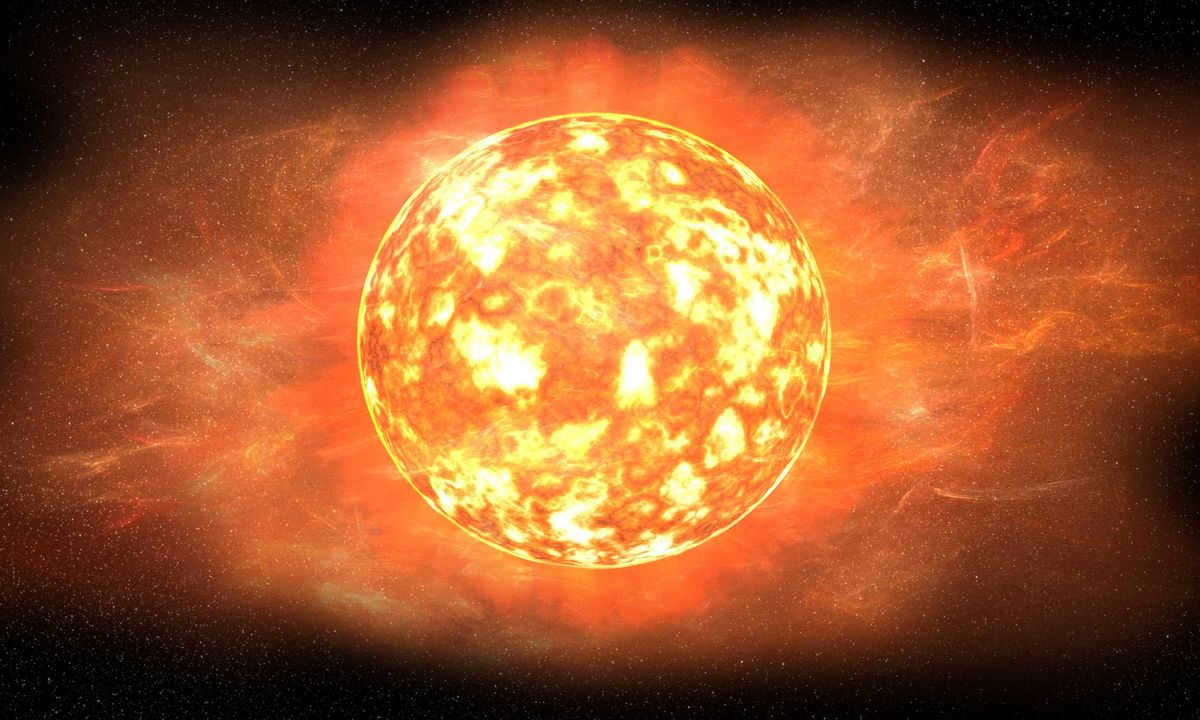

The duration of a star’s existence is determined by its magnitude. Enormous stars deplete their fuel at a faster rate. Their life span can be as brief as a few hundred thousand years. Conversely, diminutive stars endure for countless billions of years since they consume their energy at a slower pace.
Big celebrities have their own unique way of doing things. When they face a downfall, they unleash an extraordinary amount of energy, resulting in a massive explosion that gives rise to a supernova. If the brightness of the supernova is 1.4 times that of the sun, then unfortunately, the core cannot sustain its existence and, after another collapse, the supernova transforms into a neutron star. The inner matter of the star will compress to the extent that the atoms form a dense shell consisting of neutrons. If the star is three times larger than the sun, the collapse will simply annihilate it, erasing it from the universe.
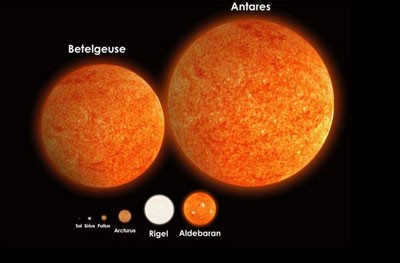
The expulsion of a star in the Universe can stretch out for millions of years. Eventually, the gravity of a neighboring star or the explosive shockwave of a supernova will influence it, initiating a new cycle. This phenomenon will take place throughout the Universe – an eternal loop of existence, demise, and rebirth.
The outcome of this celestial progression is the creation of the essential heavy elements for sustenance. Our solar system originated from the second or third generation of expulsions, which is why the Earth and other planets possess these heavy elements. In essence, we all contain fragments of stars.
Is the UY Shield the largest star?
Comparing the size of the Sun and the UY Shield star reveals that the Sun appears as a tiny pixel to the left of the UY Shield.
The UY Shield supergiant is considered the largest star currently known, although this claim comes with some reservations. The UY Shield is located 9500 light years away from Earth and can be observed as a faint variable star using a small telescope. Astronomers estimate that its radius is more than 1700 times that of the Sun, and during its pulsation period, this size can increase up to 2000 times.
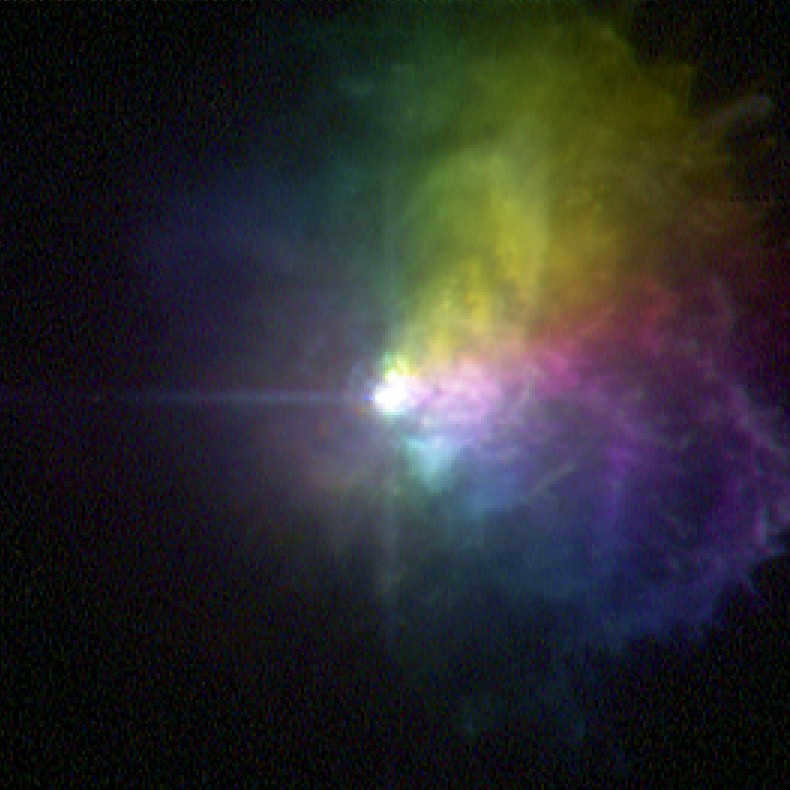
It appears that if this particular star were to replace the Sun, the current orbits of the planets in the Earth’s group would be within the vast expanse of the supergiant, and the edges of its photosphere would occasionally come into contact with Saturn’s orbit. If we envision our Earth as a tiny grain of buckwheat and the Sun as a massive watermelon, the diameter of the UY Shield would be equivalent to the height of the Ostankino TV tower.
The size and brightness of the UY Shield star
It is important to mention that the immense size of the UY Shield star is completely unmatched in relation to its other characteristics. This particular star is only 7-10 times more massive than the Sun. This means that the average density of this supergiant is nearly a million times lower than the density of the air we breathe! To put it into perspective, the density of the Sun is 1.5 times higher than that of water, while a single grain of matter from a neutron star can even weigh millions of tons.
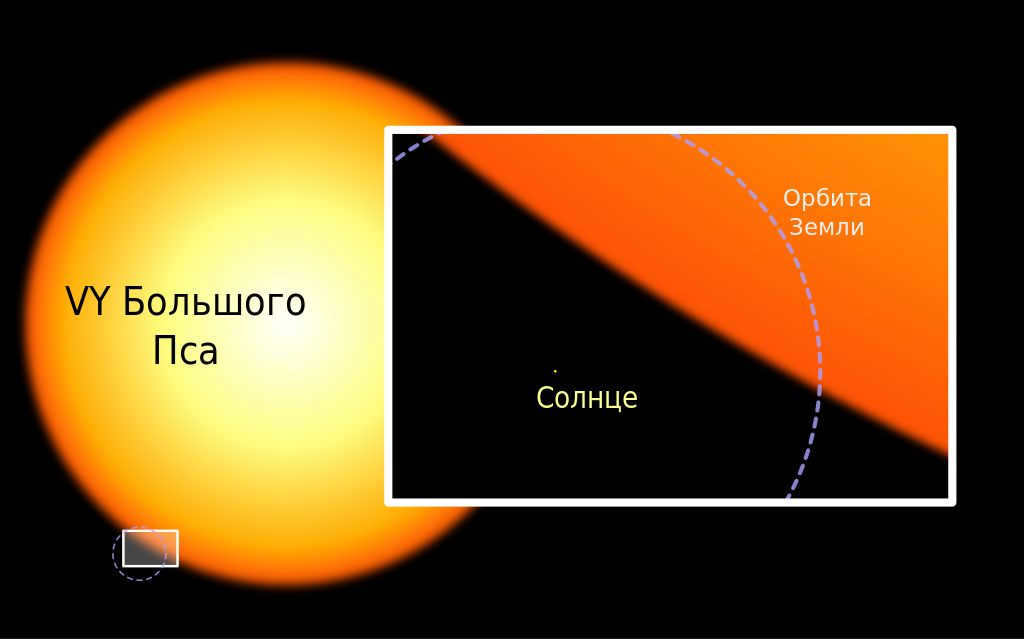
To put it simply, the density of a star like UY Shield is comparable to that of the layer of atmosphere found about a hundred kilometers above sea level. This layer, known as the Karman line, serves as the boundary between Earth’s atmosphere and outer space. Interestingly, the density of UY Shield is only slightly lower than that of the vacuum of space!
Furthermore, UY Shield is not the most luminous star.
Having an intrinsic luminosity of 340,000 solar luminosities, it is significantly less bright than the most brilliant stars. A prime illustration is the star R136, which stands as the most massive star currently recognized (265 solar masses) and is approximately nine million times more luminous than the Sun. Concurrently, the star is only 36 times bigger than the Sun. Consequently, R136 proves to be 25 times brighter and roughly the same number of times more massive compared to UY Shield, although it is 50 times smaller than the giant.
VV Cepheus
VV Cepheus is a crimson hypergiant that asserts its status as the most colossal star in existence. Regrettably, this claim falls just short of the truth, although it comes remarkably close. When it comes to dimensions, VV Cepheus ranks third among all celestial bodies.
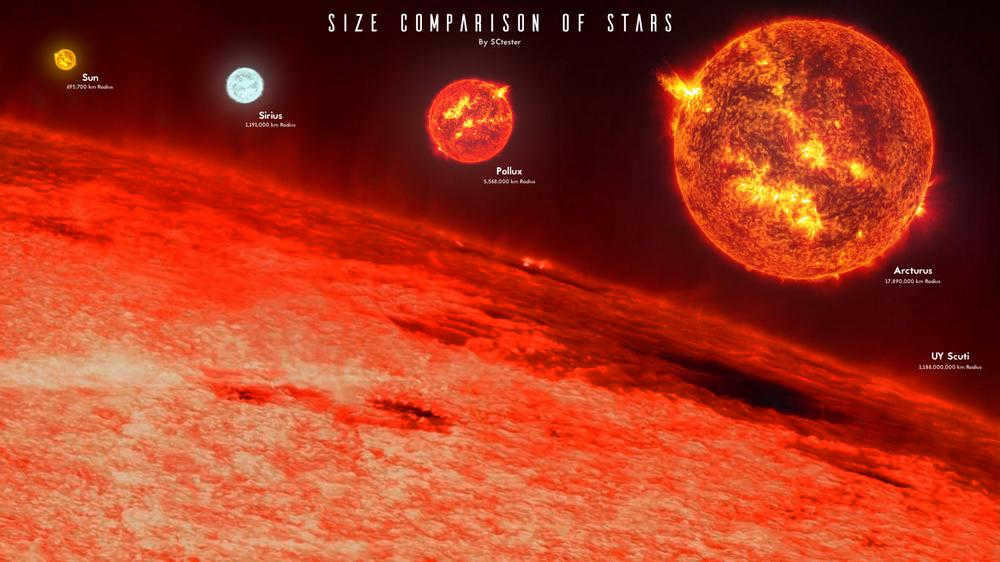
VV Cepheus is an eclipsing variable star, which means it consists of two stars, with component A being the giant star we will discuss. The second component is a blue star that is unremarkable, except for being 8 times larger than the Sun. However, the red hypergiant star is also pulsating, with a period of 150 days. Its size can vary between 1,050 and 1,900 times the diameter of the Sun, and when it’s at its maximum, it shines 575,000 times brighter than our Sun!
We can compare the size of the Sun and different larger stars with VV Cepheus. Despite being located 5,000 light years away from us, VV Cepheus has a brightness of 5.18 m in the sky, which means that under clear skies and with good eyesight, it can be easily spotted. Even with binoculars, it is still relatively easy to find.
The Swan’s NML
Astronomers have discovered a colossal star in the Swan constellation that is situated approximately 5000 light-years away from Earth.
With a mass fifty times that of the Sun, the NML of the Swan shines with a luminosity one million times brighter than our own star.
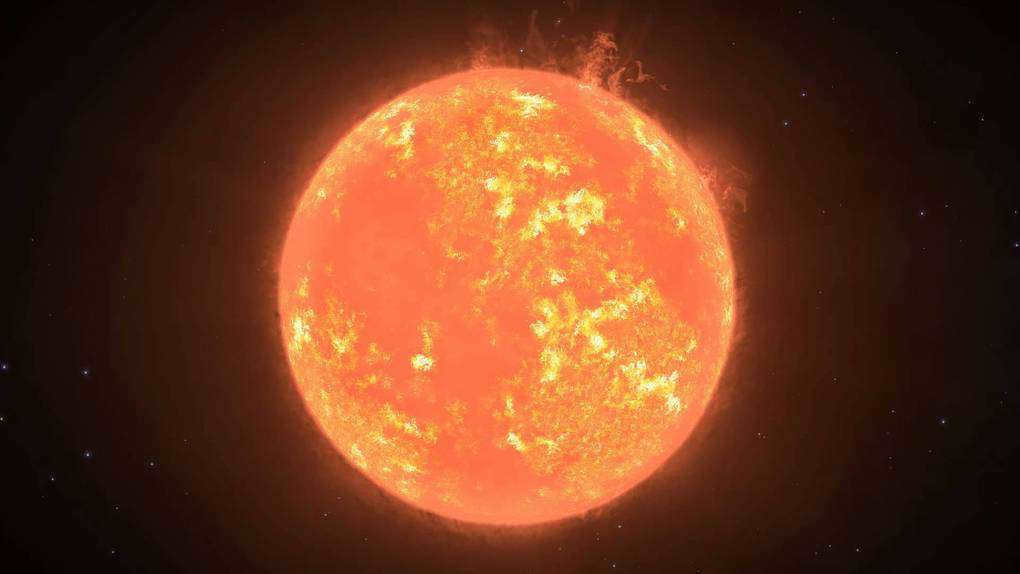
Only the use of a powerful telescope in the Northern Hemisphere enables one to observe this particular star in the vast expanse of the night sky.
VY, the Colossal Canine
With a diameter estimated to be between 1800 and 2100 times that of the sun, VY, the Big Dog, holds the record for being the largest known red hypergiant. If it were located at the center of our solar system, it would engulf all the planets, including Saturn. Even the previous contenders for the title of the biggest stars in the Universe would be completely dwarfed by its immense size.

The Sun is so small compared to other stars in the Universe. It would only take light 14.5 seconds to complete a full orbit around our Sun. However, if we compare it to VY of the Big Dog, the journey would take much longer. In fact, it would take light 8.5 hours to travel around VY of the Big Dog! To put it into perspective, if you were to travel along the surface of VY of the Big Dog in a fighter jet at a speed of 4500 km/h, it would take you a non-stop journey of 220 years to complete the orbit.
VY of the Big Dog is a truly fascinating star. Its exact size is still a mystery due to the blurred corona, which has a much lower density than the Sun’s corona. In addition, the star itself has a density thousands of times less than the density of the air we breathe. These unique characteristics make VY of the Big Dog a subject of ongoing research and exploration.
The star known as VX Sagittarius can be observed in the night sky using binoculars or a small telescope. Its brightness ranges from 6.5 to 9.6 magnitude.
VX Sagittarius
VX Sagittarius is classified as a hypergiant, which is the most luminous and massive type of supergiant star. It is also relatively rare and has a short lifespan. With a radius approximately 1520 times that of the Sun, VX Sagittarius is an incredibly large star.
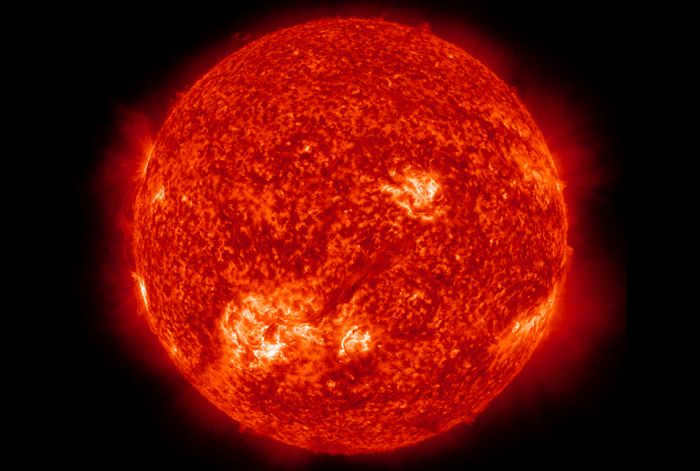
VX Sagittarius is situated in the constellation Cepheus, roughly 9,000 light-years away from our planet.
Its immense size is such that it could effortlessly engulf Saturn’s orbital path if it were positioned in the Sun’s stead. The star’s crimson hue serves as an indication that its temperature falls within the range of 3,000 to 4,000 on the Kelvin scale. Stars that are hotter in nature exhibit a yellowish coloration, while those that are exceptionally hot present a bluish tint.
AH Scorpius
With a radius ranging from 1287 to 1535, AH Scorpius is a captivating red supergiant located in the stunning Scorpius constellation. Its diameter is approximately equal to that of 1412 suns. Situated a staggering 7400 sv. years away from our planet, AH Scorpii is adorned with a dust shell, which can be marvelously observed in a high-resolution photograph.
Enveloping AH Scorpii, the dust shell adds to the allure of this celestial wonder.
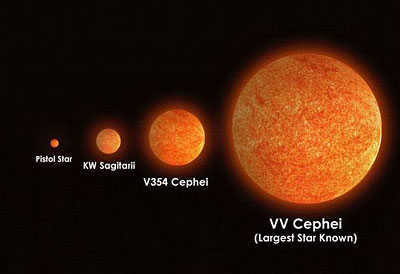
This star is known as a variable star, as its brightness changes due to various physical processes happening on its surface. The constellation is named after the mighty and distinctive scorpion due to the striking resemblance of its star pattern.
Approximately 1530 is the radius of Wetherland 1-26, the biggest star in the constellation Sacrilege’s large star cluster. It was first identified in 1961 by Swedish astronomer Westerland and was subsequently included in reference books under the discoverer’s name.
Westerland, assuming it was a star in our solar system, has a much larger radius compared to the Sun. In fact, its photosphere would have been large enough to encompass the orbit of Jupiter.
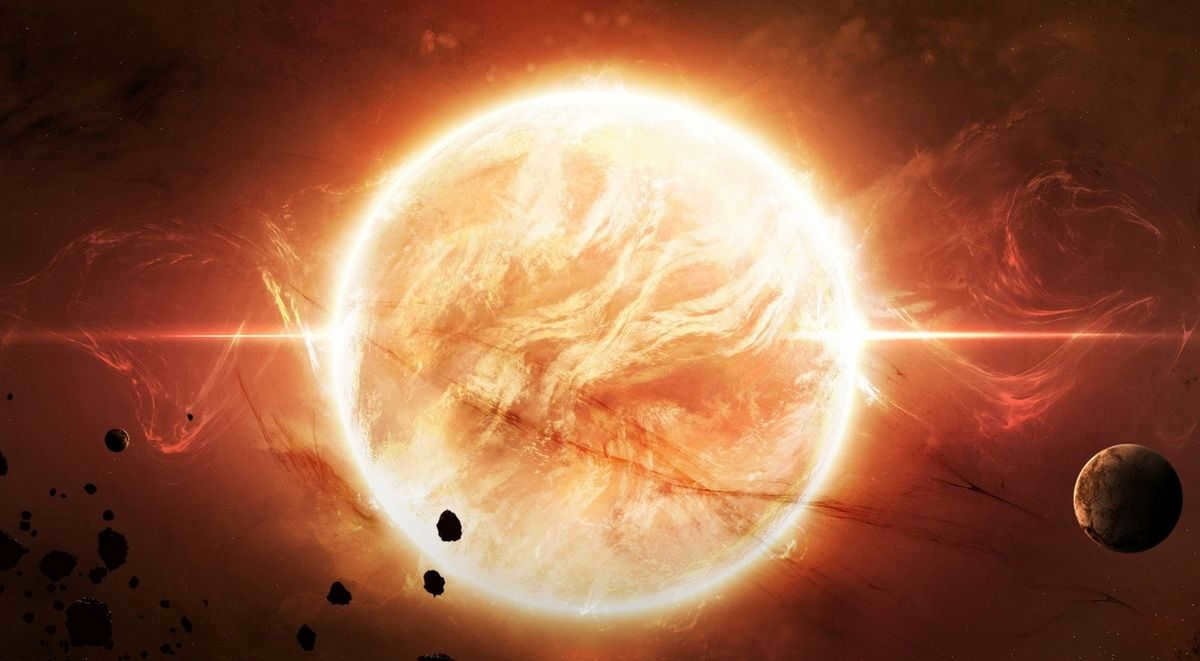
Remarkably, this particular star is 380,000 times more luminous than our Sun, but due to its immense distance of 11,500 light years, it remains invisible to the naked eye.
VV Cepheus A.
Situated in the direction of the Cepheus constellation, this celestial object is positioned approximately 5 thousand light years away from Earth. Classified as a red hypergiant, its radius is estimated to be between 1050 and 1900 times that of the Sun, making it a part of a binary star system.

VV Cepheus B, a small blue star, orbits around its larger companion in an elliptical path. The star was named after the bigger star in the pair and is currently recognized as one of the largest binary stars in the Milky Way galaxy.
This Kila
The double star located in the constellation of Kylia holds the title of being the largest double star in our galaxy. Situated at a considerable distance from us, approximately 7500 light-years away, it outshines our Sun by an astounding 5 million times. This celestial body was initially observed and documented by Pieter Keyser, a Dutch navigator, during the latter part of the 16th century.
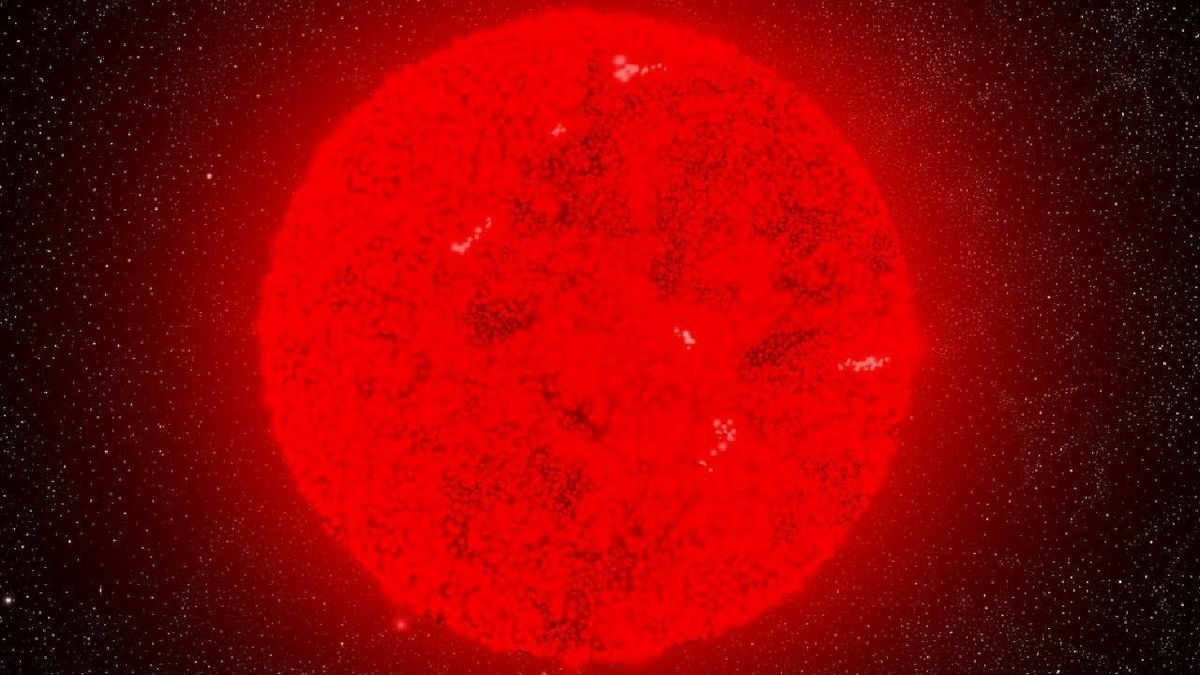
Etak Kilä is ranked among the top ten largest stars in the Universe. It is interesting to note that just three decades ago, this star was invisible to the naked eye. However, in the 1980s and 1990s, its brightness underwent a significant increase.
Situated in the Eagle constellation, this star is located more than 13,000 light-years away. It poses a challenge for classification due to its unique characteristics.
The star’s low stellar matter density is accompanied by a dense fog of matter that surrounds it. This fog is believed to have a mass equivalent to 30-40 times that of the Sun.
Presently, the star is classified as a yellow supergiant.
Sirius
Radius: 1.7 Sirius, the luminous and fairly sizable star that is nearest to our planet, can be found in the constellation of Canis Major, commonly known as the Big Dog.
It is the most brilliant star visible in our sky, emitting a light that is an astounding 22 times brighter than our Sun. However, this is not a record-breaking brightness by any means. The exceptional brilliance of Sirius can be attributed to its close proximity to Earth.
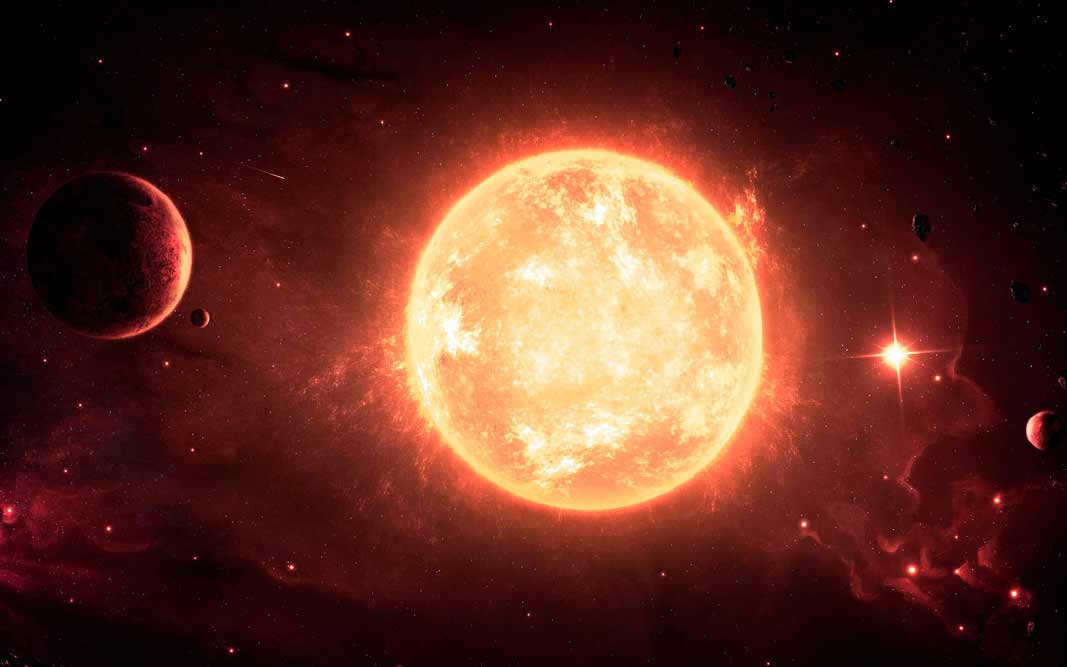
There are numerous stars in the universe that are larger and brighter. Since ancient times, the constellation representing a big dog and its brightest star have been revered and considered sacred by the people of Egypt.
In Assyria and Babylon, however, the Big Dog constellation was associated with the snake, indicating that the dog’s significance derived from earlier religious beliefs. It was later discovered that Sirius is actually a binary star system. This discovery was a major triumph in 19th-century astronomy.
The double star system known as Sirius is located 8.67 light-years away from us and is currently approaching at a speed of 6.7 km/s.
The universe is home to stars of various sizes. For ease of reference, all star radii are measured in terms of solar radii.
V766 Centauri
can be rephrased as
V766 Centauri
is another name for the star V766 Centauri.

This celestial object, also known as HR 5171 A, is a yellow hypergiant and a binary star. Its smaller companion, HR 5171 B, orbits V766 Centauri every 1300 Earth days.
Hypergiants
The hypergiant VY Canis Majoris releases massive amounts of gas during its eruptions. If it is practically impossible to locate the largest star, perhaps we should determine its existence theoretically. In other words, we should find a limit beyond which a star can no longer be considered a star. However, modern science faces a challenge even in this aspect. The current theoretical model of stellar evolution and physics fails to explain many phenomena that are observed through telescopes, and hypergiants are a prime example of this.
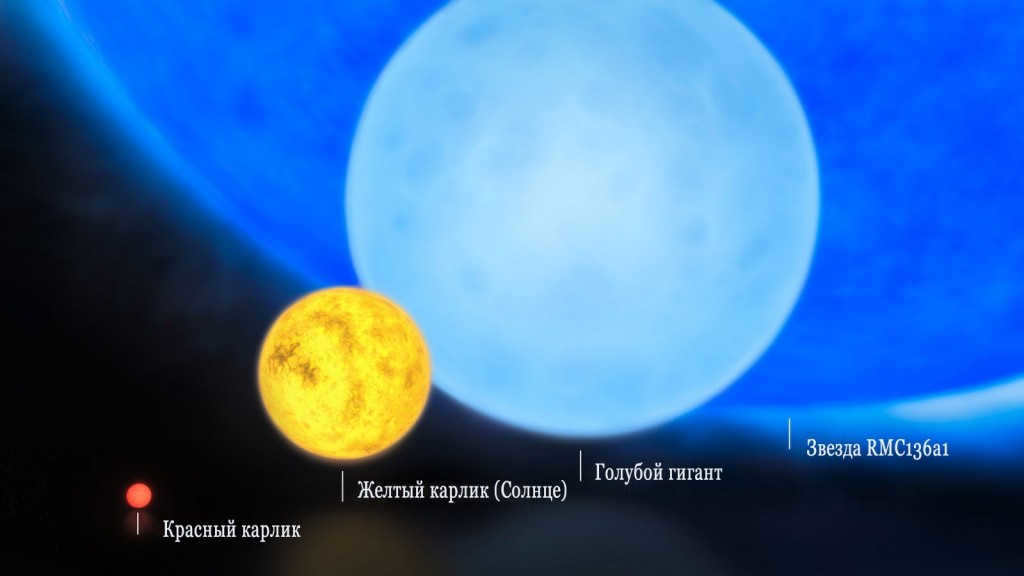
Astronomers have had to revise their understanding of the maximum mass of stars multiple times. This concept was initially introduced by Arthur Eddington, a renowned English astrophysicist, in 1924. Eddington’s calculations revealed a cubic relationship between the luminosity of stars and their mass.
Eddington came to the realization that stars cannot continue accumulating mass indefinitely. The luminosity increases at a faster rate than the mass, eventually leading to a disruption in hydrostatic equilibrium. The increasing brightness exerts a stronger light pressure that can cause the outer layers of the star to be blown away.
Eddington’s calculation of the limit was 65 solar masses, but it has been further refined by astrophysicists who took into account previously unaccounted-for components and utilized advanced computing technology. As a result, the current theoretical limit on the mass of stars stands at 150 solar masses.
According to the artist’s perspective, R136a1 is currently recognized as the most massive star. In addition to this, there are a few other stars with significant masses, which can be counted on one hand in our galaxy. These stars are referred to as hypergiants. It is worth noting that despite being smaller in size, R136a1 surpasses other stars that would be expected to be in a lower class, such as the supergiant UY Shield. This is because hypergiants are not categorized based on size, but rather on mass. They have their own class on the spectrum-luminosity diagram (O), positioned above the class of supergiants (Ia). The exact threshold for the mass of a hypergiant has not been determined, but generally speaking, their mass exceeds 100 times that of the Sun. None of the largest stars in the Big Ten come close to these limits.





